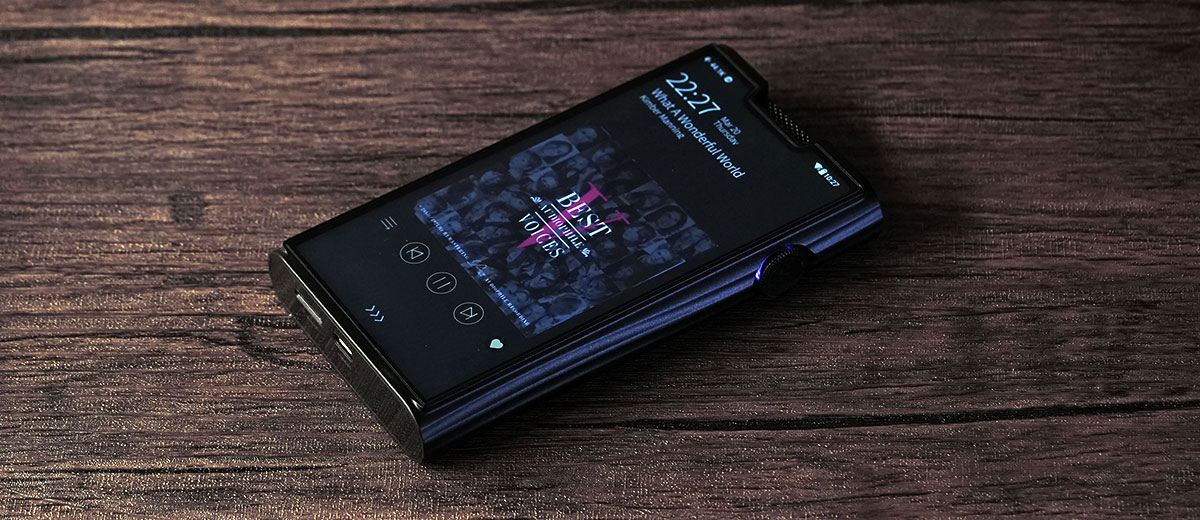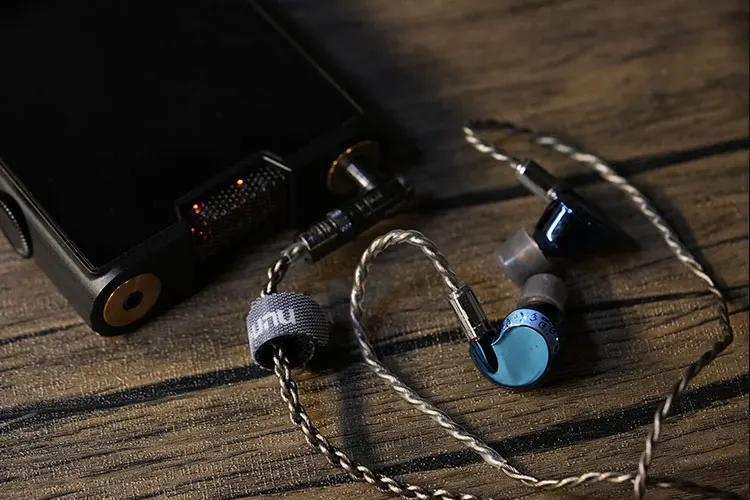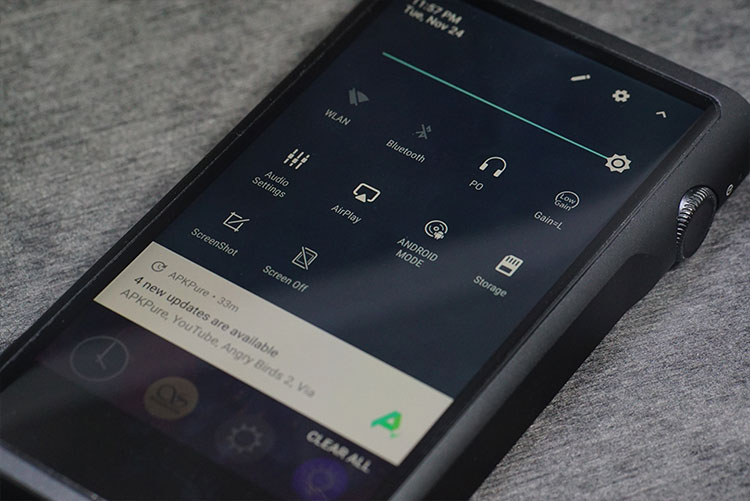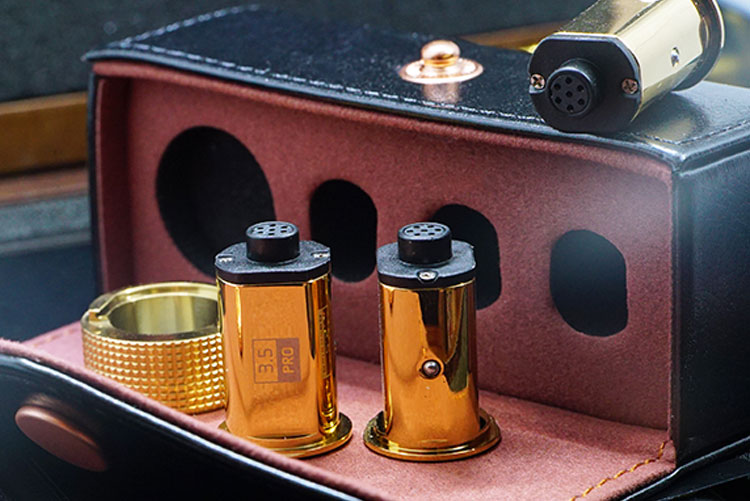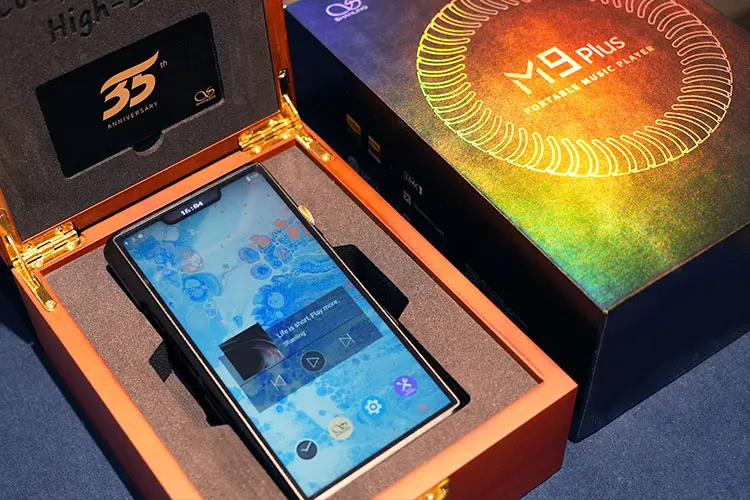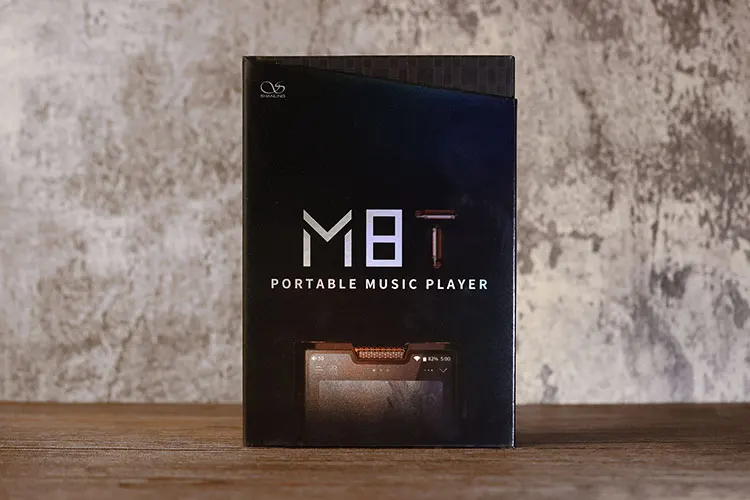Synergy
Efficiency
Whenever tubes are used, there will be some warm-up time and before that, there might be some hiss in the background.
This is no exception for the M8T. I found that it took a few minutes for the tubes to stabilize in performance and get less noisy. After that, the noise level is well suppressed and a highly dynamic output is achieved.
On the transistor mode, it is certainly quieter and requires no warmup time. So, the player can cater to sensitive IEMs which wouldn’t normally work well with tube amping.
Power
In Transistor Mode, the M8T has 1125mW max over 32Ω load on balanced output and an output impedance of below 1ohm.
This allows it to drive most IEMs effortlessly and the highest gain can cater to powering some sensitive headphones that don’t require too much current.
When switched to Tube modes, efficiency is slightly discounted and the M8T can output as much as 950mW with 123dB S/N rated which is decent.
I tried putting the HD 800s on the M8T and it sounds quite full and natural, but there is room for stronger dynamics compared to driving it with the older M9 on the highest gain mode.
Pairings
Sounding airy and smooth in the mids, the Tube modes work well for reference IEMs such as the Earsonics Switch 300 PRO, sounding dynamic but more rounded and fuller in the vocal frequencies.
The mids are still smooth enough for Classical music and instrumentals to sound engaging with a small stress on the instrument’s harmonics and chamber resonances with the small bump in bass.
I like how it gives the mids more character and presence but is not overly pushing it to steal the show.
With the Falcon Ultra, the bass is punchy and well-weighted, with the vocals smoothly rendered. In the Triode mode, the vocal has a strong presence and good brilliance.
It sounds even lusher and fuller with the mid-bass texture thickened on the Ultra-linear mode, which works even better with softer or higher-pitch voices.
The Transistor mode is also very engaging to listen with a bit of added warmth. I tested with multi-BAs outdoors including the Westone Audio Mach 80 and Mellianus from Oriolus, and without any EQ adjustment, the warmth in bass compensates the ambience well.
With the treble gently rounded it maintains good air and definition for percussion instruments but never gets overly hot.
Wireless Connectivity
Bluetooth
The M8T Bluetooth connection is bi-directional. When acting as a transmitter it can beam using LDAC, SBC, and AAC codecs.
As a receiver, it can also receive via the same Codecs which allow users to switch between higher output quality or better range/lengthened playback time.
Testing with the RSSI (Received Signal Strength Indicator), the M8T is rated excellent for its connection strength when tested across the living room, which is quite similar to the M9 Plus.
WiFi
Using the WiFi meter app to check, the M8T displays similar strength in receiving WiFi signals compared to the M9 Plus.
The connection remains stable when moving around and behind doors and walls, and when using the Airplay receiving function there are no delays heard.
Wired Connectivity
USB-DAC
When using the M8T as a USB DAC you can choose not to charge the unit while listening, which is great for the battery’s health.
The output quality on USB decoding mode is consistent with local playback. You can also access the audio settings and change the Lowpass filter, but there is no way to switch between the Tube and Transistor amping modes after entering the DAC mode.
USB-OTG
As always, you may hook up USB drives or card readers to manage photos and music files.
This is quite a handy feature and can be a lifesaver if your camera’s memory card runs low on capacity, or when you want to copy songs quickly from another drive.
Select Comparisons
Shanling M8
Technical
The Shanling M8 looks like a smaller M8T but runs on transistor amping. The design features AK4499EQ decoding and Shanling’s in-house developed I/V stage.
The rest of the hardware is considered quite obsolete, as it runs on Android 7.1 powered by a Snapdragon 430 CPU with 4GB RAM, and houses a smaller 7000 mAh battery.
Design
The M8 comes with a changeable earphone jack design which is a cool feature at the time it was released. However, in practice, it would still be easier for both SE and BAL sockets to be present at the same time.
The slightly M8T certainly looks cooler with the tube section added on top and curves instead of a recessed area on the sides.
The volume knob with multi-color backlights is also a nice touch-up on the M8T and overall, it feels more luxurious and sturdier.
Performance
The M8 was well-received for its vocal-forward tuning but clearly, the hardware and OS are outdated. On the M8T it not only inherits a similar tuning direction, but the decoding quality and overall resolution and balance have been much enhanced.
The warm, lush tuning on M8 mimics the tube performance but even though it is lush and full-bodied, it is hard to replicate the harmonics as well as the smooth texture with actual tubes.
The staging is also more holographic and naturally presented on the M8T, even in the tube modes.
The M8 is ideal for vocal works but the M8T, even without switching to Transistor mode, sounds more expansive and balanced with Classical music and instrumentals.
With the tube modes, it gets more vivid and rich in harmonics than the M8, which stresses the vocal frequencies even more but doesn’t sound as layered and controlled.
The M8T is much more flexible in pairing with the 3 modes not to mention you can also make use of the DAC’s filters and equalizing. The M8T is a clear winner here and should be considered a nice upgrade if you are already using the M8 and love it.
Shanling M9 Plus
The M9 Plus has been the flagship for more than 1.5 years but is now discontinued.
Technical
There are 4 AK4499EX decoders inside and it can output up to 1125mW in its balanced output, which is quite similar to M8T’s max output in Transistor amping mode.
Another noticeable change is the Android 13 OS compared to Android 10 on the M9 Plus, which is no longer supported since 2 years ago.
Design
The design of the M9 Plus and M8T is very similar so I will keep it short.
One change on cosmetics is the removal of the SD card cap which I find more friendly, and the secondary screen is replaced by the tube components. Both devices use Sharp screens and are equally pixel-packed and high in resolution.
Performance
When comparing the two side by side, it is clear that the M9 Plus and M8T take two different approaches to tuning.
Regardless of which mode the M8T is switched to, it still carries more warmth than the M9 Plus which has a more reference, balanced style tuning.
This results in the M8T stressing the mids more and the M9 Plus allowing more elements across the whole spectrum and retrieving more micro detail with ease, working well for orchestra works and live recordings.
The bass attack speed on the M9 Plus is faster, firmer, and recovers more cleanly with a faster decay, whereas the M8T is more relaxed and elaborated in the upper mids with extra harmonics in tube mode to further enrich the vocals.
The M9 Plus feels more precise and clearer with percussion, and the M8T takes away some of the sparkle. However, when it comes to piano and bass, the M8T feels more elaborated with the chamber resonances and harmonics.
The M9 Plus is generally more loyal to the recording and more neutral. Nevertheless, the M8T manages to achieve a similar level of detail retrieval.
Even though the M9 has higher technicalities, I think the M8T sounds more engaging with most genres, with the warmth and tube harmonics. It reinterprets the sound heard with different tracks, giving it a more ‘musical lilt’ than the M9 Plus.
My Verdict
The flagship Shanling M8T DAP is a successful and unique upgrade from the older M8. With an upgraded Android 13 user experience and multiple tube and transistor modes, this is a more mature, organic, and balanced tuning.
It is also a worthy but very different flagship DAP from the older M9 Plus and in my opinion, better represents the traditional warm and inviting Shanling ‘house sound’.
If you think the current flagship DAP offerings in the market are too analytical, or if you plan to upgrade from the M8, then the M8T should be a strong consideration.
Shanling M8T Technical Specifications
- Dimensions 147 x 82 x 22mm
- Weight 383g
- Screen 6.0-inch 1080×2160 Sharp
- System Open Android 13
- Decoding Rate (Max) PCM 768kHz/32bit & DSD 1024
- USB DAC Support PCM 768kHz / 32bit, DSD 512
- DAC 2×4499EX DAC & 2×4191EQ
- Bluetooth Transmission LDAC / SBC / AAC
- Bluetooth Reception LDAC / SBC / AAC
- Battery Capacity 8350mAh

